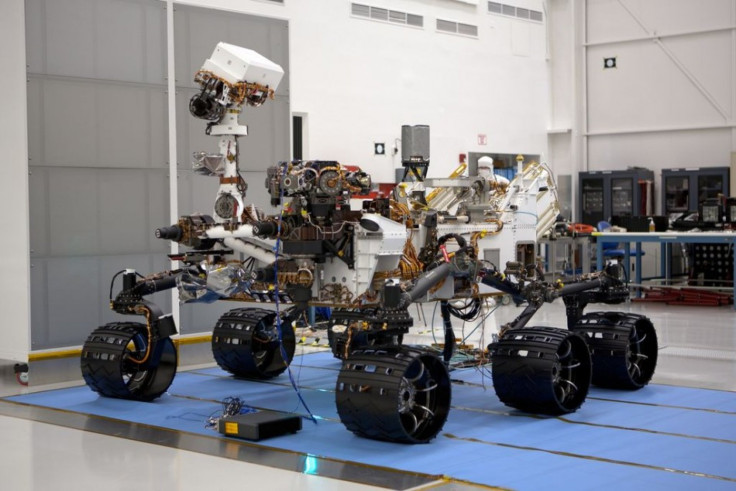New Mars Rover 'Curiosity' Set Sights On Gale Crater: Unraveling Environment For Life

Nicknamed 'Curiosity,' NASA's new Mars rover is being prepared to explore Gale Crater on Mars, with a mission to find answers to whether the environment could support and preserve life on Mars.
Instead of taking a leap to search for the existence of life on the Red Planet, scientists seem to be first taking a slower and more tangible step to understand the environment on Mars for life.
As Curiosity's target, Gale Crater was chosen by scientists among 100 possible landing sites.
The crater, named after Australian astronomer Walter F. Gale, is a 96-mile-wide depression near the Martian equator, holding a mountain rising upward nearly three miles at the center.
"The thing about this mountain is it's not a tall spire," John P. Grotzinger, the project scientist, was quoted by The New York Times as saying at a news conference. "It's a broad, low, moundlike shape. What it means is we can drive up it with a rover. So this might be the tallest mountain anywhere in the solar system that we could actually climb with a rover."
"Scientists identified Gale as their top choice to pursue the ambitious goals of this new rover mission," said Jim Green, director for the Planetary Science Division at NASA Headquarters in Washington. "The site offers a visually dramatic landscape and also great potential for significant science findings."
Curiosity is around twice as long and over five times as heavy as any previous mars rover, loading 10 science instruments. Unlike the previous two solar-powered rovers NASA sent to Mars, Spirit and Opportunity, Curiosity will generate its electrical power from heat produced by 10 pounds of plutonium, making it less susceptible to the changing seasons on Mars as well as dust storms blocking sunlight.
The nuclear-powered rover the size of a small S.U.V is scheduled to launch on November 25, 2011 and land in August 2012.
Researchers will use Curiosity's one-Martian-year stay on Mars to study whether the area has favorable environmental conditions for supporting microbial life and for preserving clues of whether life ever existed.
The sophisticated instruments of Curiosity include two tools for ingesting and analyzing samples of powdered rock that the rover's robotic arm collects, a radioisotope power source that provides heat and electric power to the rover, and a rocket-powered sky crane suspending Curiosity on tethers that lowers the rover directly to the Martian surface, according to NASA.
"This is not a life-detection mission," lead scientist John Grotzinger, with NASA's Jet Propulsion Laboratory in Pasadena, Calif., told Discovery News.
"On Earth, we know that searching for signs of life is really a tricky business, even where life is ubiquitous. We find microorganisms all over this planet in the strangest environments that you could ever imagine, but what we know from studying the rock record is that that they almost never get preserved," Grotzinger said.
"When you do find the right formula, then you can go to other places around the world, look for that particular type of rock, and that increases your chances of finding something."
Even if small microfossils such as stromatolites are discovered on Mars, scientists would not be able to interpret them uniquely as life-creating materials, Grotzinger told the News. By the time Curiosity ends its exploration on Gale Crater, scientists hope to have enough information to design a follow-on mission to return a key rock sample, or send a life-analysis mission for on-site investigations, said the website.
Past studies from orbiting spacecraft show the mineral signatures of clays and sulfate salts, which form in the presence of water, concentrated in older layers near the bottom of the mountain, reports The Associated Press.
"Both of those are key classes of minerals that tell us about the environment on Mars and the interaction of water with that environment, and water is critical to habitability," said Dawn Sumner, a geologist from the University of California, Davis.
Curiosity carries the hope of determining how the water on Mars went from wet to a frozen desert where dust devils spin across the surface.
© Copyright IBTimes 2024. All rights reserved.





















